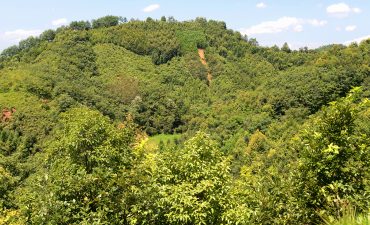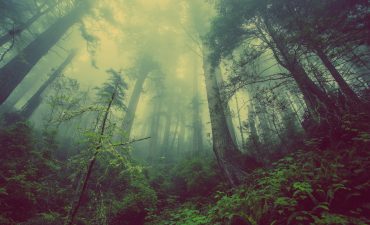Deadwood can remain in forests for generations
Forests are an important component of the global carbon cycle and can be both net sources and sinks of CO2. While forest productivity is often derived from yield tables at national level or from satellite data, carbon emissions from forests resulting from the decay of dead organic matter (mainly deadwood) are usually simulated with simple models. It is therefore important to ensure the accuracy and reliability of such models, which simulate the decay of organic matter at an appropriate scale.
The study „Dynamics of dead wood decay in Swiss forests“ combines the observations of the nationwide Swiss Forest Inventories from 1983 to 2017 with machine learning techniques to quantify the decay rates of standing and felled logs and to identify the main factors influencing dead wood decay. The decay rates and residence times (i.e. the period after which 90% of the logs had decomposed) of standing and lying deadwood were recorded. The study is based on 1016 logs selected from 671 sample points throughout Switzerland.
Deadwood remains for centuries
The researchers found that the rate of decay of the wood is influenced by the tree species, temperature and precipitation. The shortest deadwood residence times were for wood derived from beech (F. sylvatica). In the warmest locations 90% of the biomass had decomposed after 27 years, in the average locations after 35 years and in the coldest locations after 54 years.
Other hardwood species growing in humid locations lost 90% of their mass after 45 years in the warmest locations, 60 years in the average locations and 92 years in the coldest locations. Hardwoods grown in corresponding drier locations lost 90% of their mass after 62, 73 and 95 years. Softwoods had the longest residence time and lost 90% of their mass after 58, 91 and 191 years in more humid warm, average and cold locations. In drier warm, average and cold locations, conifers were 90% decomposed after 78, 135 and 286 years.
The study illustrates how long-term deadwood observations can be used to estimate deadwood decay parameters and to gain knowledge about the control of deadwood dynamics. The wood decay parameters quantified in this study can be used in carbon balance models to simulate the decay dynamics of deadwood. However, further measurements (e.g. of soil-carbon dynamics on the same plots) are required to estimate what proportion of deadwood is converted to CO2 and what proportion is incorporated into the soil.
Comment
In addition to the positive effect of increasing biodiversity in deadwood as an important habitat in the forest and the ability to store water, which has a cooling effect on the forest interior climate through evaporation, the study shows that deadwood is also an important carbon storage. It is often argued that deadwood is a carbon source and should therefore be used for energy or material purposes. The time factor is continuously underestimated. If deadwood was used for energy or material purposes, e.g. for short-living wood products (paper), the carbon bound in it in the form of carbon dioxide would return much faster into the atmosphere and thus contribute more to the climate crisis than if the deadwood was able to decompose slowly. Even in comparison with the half-lives of wood products with a long lifespan (37-67 years) as stated by the IPCC, deadwood decomposes much more slowly in some cases.
This leads to the conclusion that any use of deadwood for material and, in particular, for energy purposes is not appropriate. On the contrary, the use of deadwood increases the amount of carbon dioxide in the atmosphere. Deadwood is irreplaceable as a habitat in the forest and performs important ecosystem functions there.
Source
Hararuk, O., Kurz, W. A. & Didion, M.: Dynamics of dead wood decay in Swiss forests. For. Ecosyst. 7, 36 (2020). doi.org/10.1186/s40663-020-00248-x


